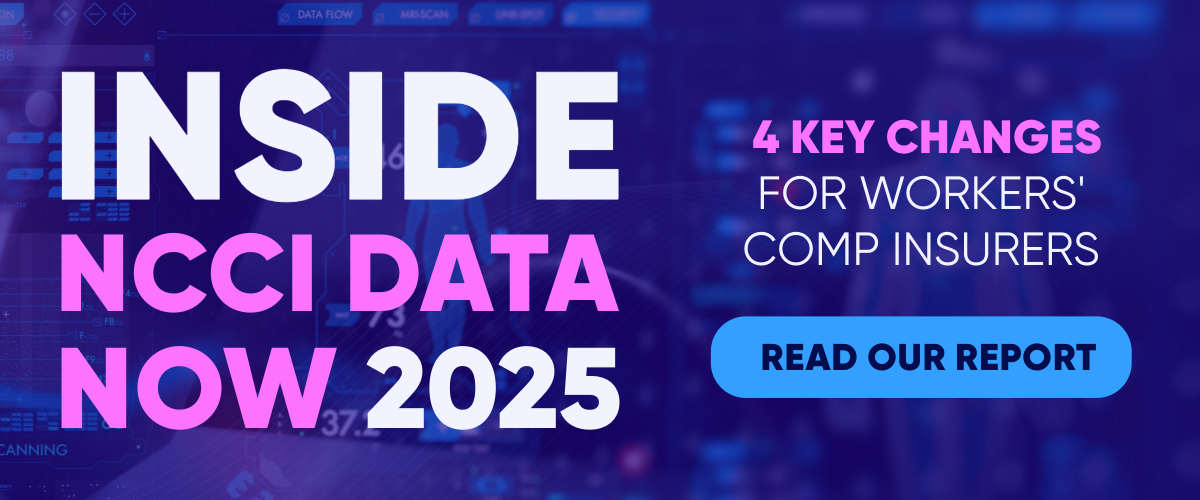As workers’ compensation reporting requirements evolve, more carriers and self-insured groups will be required to submit indemnity and medical data. This shift isn’t just a compliance exercise—it will have direct implications for underwriting models, claims management efficiency, and overall regulatory strategy.
For underwriting, claims, and compliance leaders, staying ahead of indemnity and medical data reporting changes is crucial to avoiding penalties, improving risk assessment, and optimizing claims outcomes. This article breaks down why this change matters, what challenges it presents, and how carriers can prepare.
Why Are More Carriers Required to Report Indemnity & Medical Data?
Workers’ compensation relies on accurate industry data to project loss costs, claims trends, and regulatory needs. Until now, only select carriers submitted indemnity and medical data based on premium thresholds. Now, as claims costs, medical pricing volatility, and regulatory oversight increase, the National Council on Compensation Insurance (NCCI) is expanding reporting requirements to include more carriers and self-insured groups.
What This Means for Carriers:
• More granular claim and medical cost data will be required.
• Regulatory bodies will have better visibility into cost trends and injury severity classifications.
• Carriers will need better data management processes to ensure compliance.
For insurers, this change presents both challenges and opportunities in how data is collected, analyzed, and used for risk management.
Indemnity & Medical Data: Why It Matters
Indemnity Data Reporting—Understanding Claim Duration & Wage Loss Trends
Indemnity data tracks lost wages and disability benefits for injured workers. Expanded reporting now requires:
• More precise tracking of return-to-work timelines
• Better classification of wage loss trends by industry and injury type
• Granular reporting on injury severity and claim progression
For underwriting teams, this means better modeling of loss development and premium pricing. More indemnity data allows refined risk selection and improved forecasting of long-tail claim exposure.
How True Helps
TruePolicy™ simplifies indemnity data tracking by ensuring seamless integration between policy data and claims outcomes, improving accuracy in loss projections.
Medical Data Reporting—Addressing the Rising Cost of Care
Medical costs make up the largest percentage of workers’ comp claim costs, and carriers must now report more detailed medical transaction data than ever before. New reporting requirements include:
• Breakdowns of medical treatment types and prescription drug utilization
• Billing pattern tracking to detect provider anomalies
• Geographic cost variation reporting by state and jurisdiction
For claims teams, this provides better insights into medical cost trends, fraud detection, and provider negotiations. It also helps compliance teams align with state-mandated reporting regulations.
How True Helps
TrueClaims™ automates medical data reporting, ensuring accuracy and compliance while helping claims teams identify cost drivers earlier.
Challenges & Risks of Expanded Reporting
While expanded data reporting brings better transparency and analytics, insurers will face key challenges, including:
• Administrative Burden: More data collection means higher operational demands on claims and compliance teams.
• Data Accuracy & Standardization: Reporting inconsistencies increase the risk of compliance violations.
• Technology Integration: Legacy systems may struggle to handle the expanded data sets and reporting formats.
Without the right processes in place, insurers could face submission delays, rejected reports, or regulatory penalties for incomplete or inaccurate data.
How True Helps
True’s fully integrated platform provides a centralized hub for reporting compliance, allowing underwriting, claims, and compliance teams to collaborate on accurate submissions and track regulatory changes in real time.
Opportunities for Competitive Advantage
For insurers that proactively adapt to these new reporting requirements, there are significant strategic advantages:
• Better Predictive Modeling: More complete data enables improved pricing strategies and loss cost forecasting.
• Regulatory Readiness: Staying ahead of reporting mandates reduces audit risk and non-compliance penalties.
• Enhanced Claims Management: Expanded medical reporting helps optimize provider partnerships and cost controls.
By treating data reporting as a competitive advantage—not just a compliance requirement—insurers can improve both financial outcomes and risk mitigation strategies.
How Carriers Can Prepare for the Shift
With reporting mandates expanding, insurers should take immediate steps to ensure they are ready for compliance:
1. Review Data Readiness & Compliance Gaps
• Assess internal reporting capabilities to determine what’s needed for indemnity and medical data submission.
• Ensure data accuracy by aligning claim classifications and medical coding with NCCI standards.
2. Invest in Automation & System Enhancements
• Upgrade data processing tools to handle higher reporting volumes and reduce manual data entry.
• Integrate underwriting, claims, and compliance systems to create a seamless data flow.
How True Helps
TruePolicy and TrueClaims ensure cross-departmental data alignment, eliminating reporting gaps between policy issuance, claims processing, and compliance tracking.
3. Monitor Industry Updates & Engage with Compliance Resources
• Stay informed on evolving NCCI reporting thresholds and state-specific compliance updates.
• Benchmark against industry peers to track trends and improve reporting efficiency.
The Future of Data-Driven Workers’ Compensation
As workers’ compensation data reporting evolves, insurers that adapt quickly will be positioned for better risk management, improved financial performance, and stronger compliance standing.
Rather than seeing expanded reporting as just another requirement, forward-thinking carriers will use it as an opportunity to refine claims processes, strengthen underwriting decisions, and gain a market advantage.
Are you prepared for these data reporting changes?
By staying ahead of NCCI’s evolving requirements, workers’ comp insurers can avoid penalties, improve loss forecasting, and optimize claims performance. Now is the time to evaluate your data strategy and act.
For more insights on the hottest topics in the insurance industry and to stay updated on the latest trends, join the True Community, or contact Ryan Smith at ryan@experiencetrue.com to discuss how True solutions can help you stay ahead of reporting and compliance changes.
Ready to Explore True Solutions?



